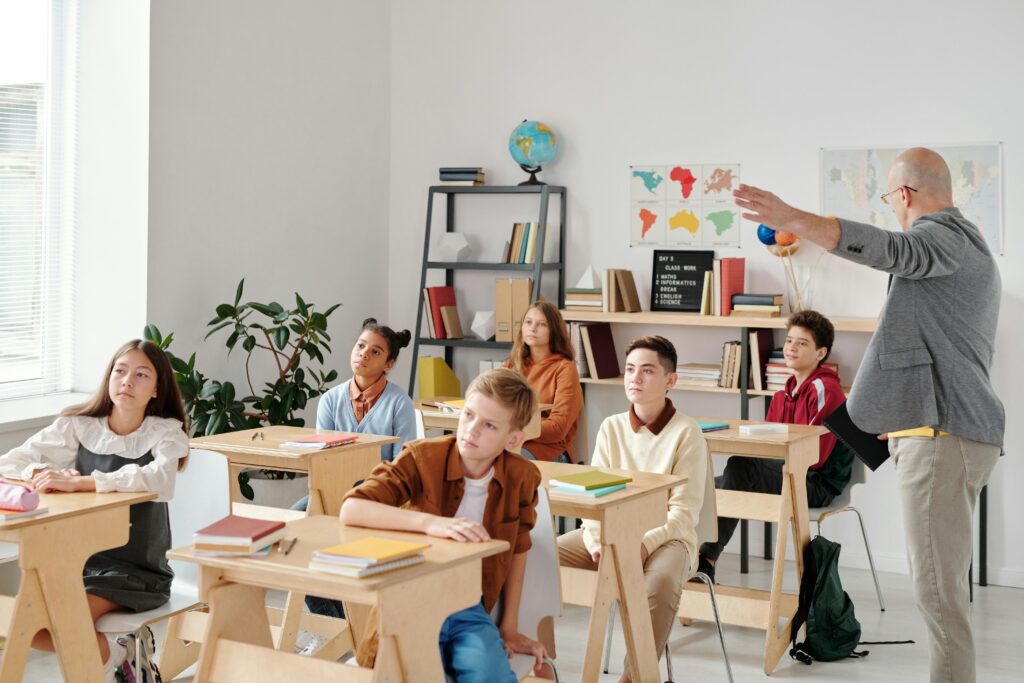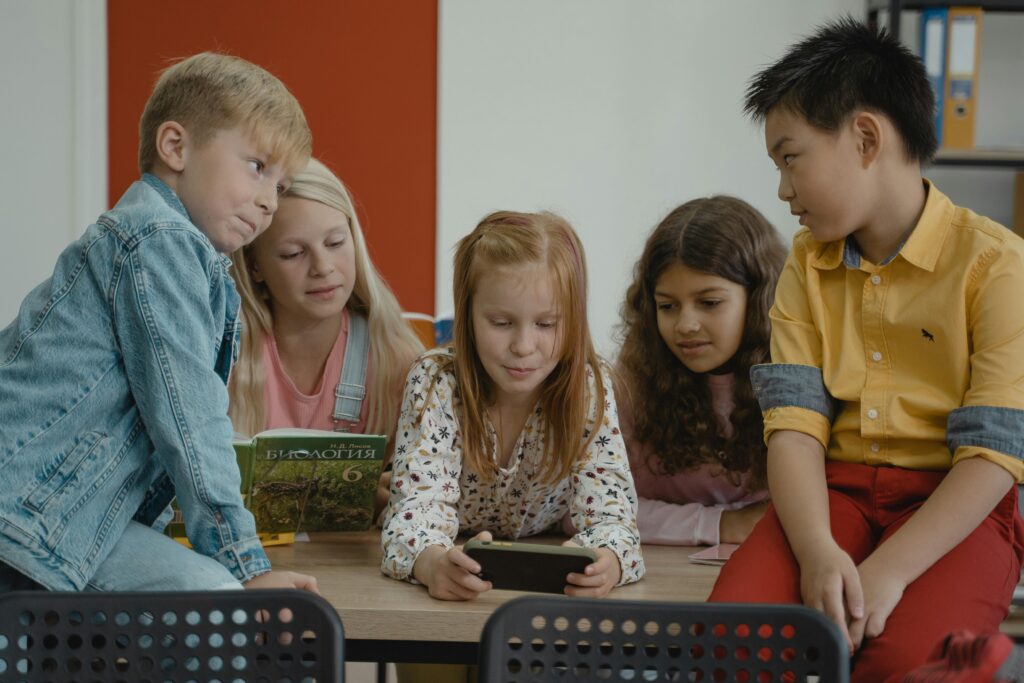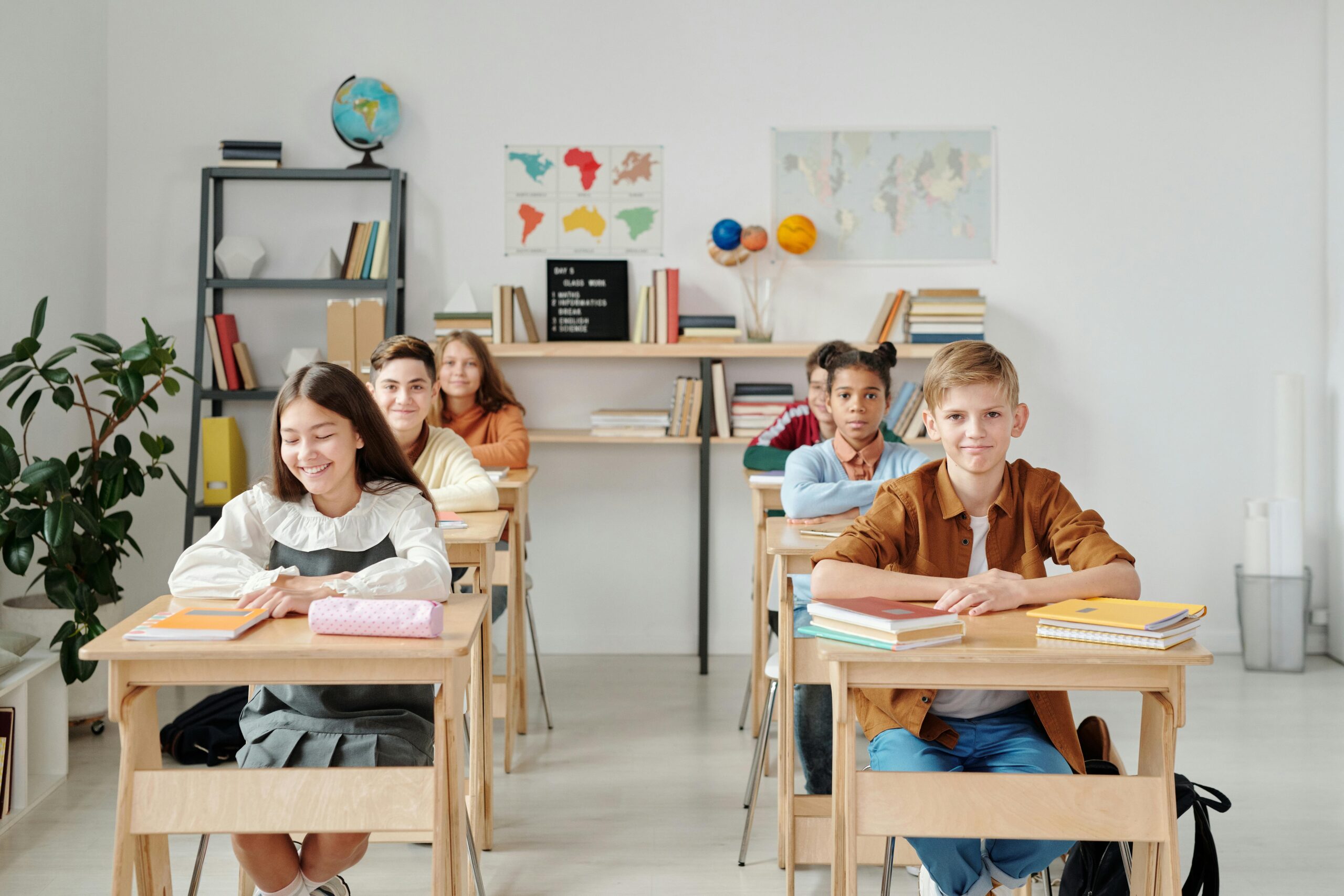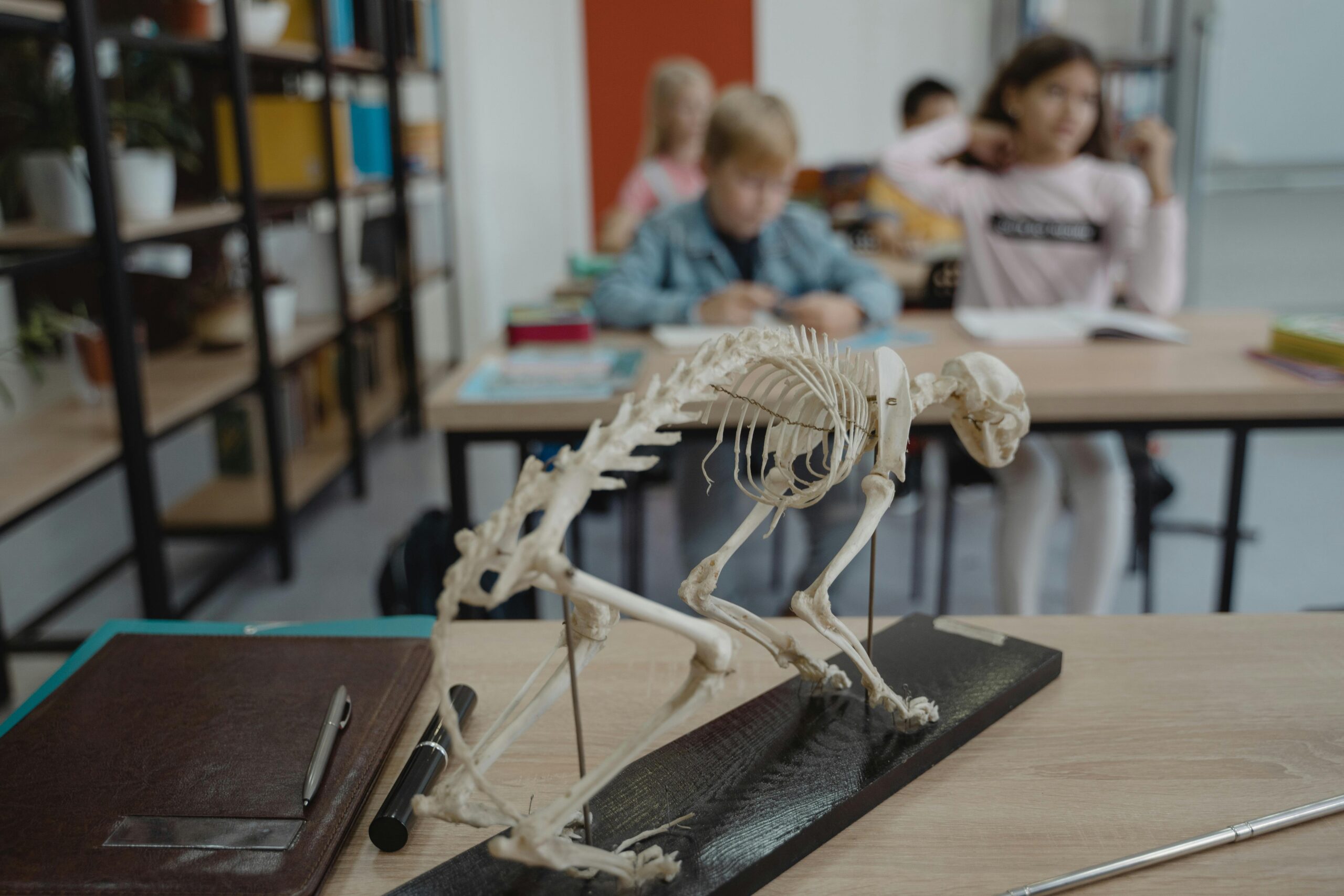Learning Pace: Gifted vs. Traditional Classrooms
When it comes to education, one size doesn’t fit all. Especially for gifted students, the learning pace in traditional classrooms can feel either too slow or limiting. If you’ve ever noticed your child finishing their assignments before everyone else or getting bored in class, it might be because their learning needs aren’t being met. Let’s dive into the differences between the learning pace in gifted and traditional classrooms and why adjusting to your child’s speed is key to keeping them engaged.
Traditional Classrooms: One Speed for All
In a typical classroom, the goal is to keep the entire class moving at the same pace. Teachers follow a set curriculum designed for the average student, which can sometimes mean that faster learners aren’t as challenged. Traditional classrooms are wonderful for students who need more time to absorb information, but for gifted children, this steady pace can feel like a slow-motion movie.
Imagine your child has already grasped a math concept that the rest of the class is still working on. In a traditional classroom, they might spend days—or even weeks—reviewing material they already know. This can lead to boredom and frustration, as they’re not being challenged to reach their full potential.
Gifted Classrooms: Tailored to Your Child’s Speed
On the other hand, gifted classrooms move at a pace that matches your child’s abilities. Teachers in gifted programs recognize that these students absorb information more quickly, so they adjust the curriculum accordingly. This faster pace keeps gifted students engaged and excited about learning. Instead of waiting for the class to catch up, your child can move on to more complex material that challenges them.
In a gifted classroom, your child might be studying advanced topics while their peers in traditional classes are still covering the basics. For example, a gifted math student may work on algebra while others are learning multiplication. This tailored approach helps gifted students stay curious and motivated, as they’re constantly learning something new.
Avoiding the “Boredom Trap”
One of the biggest challenges for gifted students in traditional classrooms is boredom. When a child already knows the material, it can feel like they’re stuck in a never-ending review. This can lead to disengagement, where they stop paying attention or even develop poor study habits because they’re not being pushed to do their best.
Gifted programs avoid this boredom trap by offering a faster pace and deeper content. In these settings, students are encouraged to explore subjects in greater depth, often diving into topics that are far beyond their grade level. This keeps their minds active and reduces the chances of them feeling disinterested in school.
Challenging but Not Overwhelming
While a fast pace can be beneficial, it’s important to strike a balance. Gifted programs aim to challenge students without overwhelming them. The goal isn’t just to race through the curriculum but to provide rich learning experiences that deepen understanding. For example, your child might spend time exploring a concept through hands-on projects or collaborative group work, rather than simply speeding through textbooks.
This thoughtful approach ensures that gifted students not only move quickly but also retain what they’re learning. After all, the goal is long-term success, not just short-term achievements.
Meeting the Need for Intellectual Stimulation
Gifted students crave intellectual stimulation. When they aren’t being challenged, they can lose interest in school altogether. That’s why the pace of learning in a gifted classroom is so important—it meets their need for continuous mental engagement. These students thrive when they’re asked to solve complex problems, explore new ideas, and think critically about the world around them.
For example, your child might be tasked with designing a science experiment or writing a detailed essay on a historical event. These kinds of challenges push them to think creatively and build important problem-solving skills.
Building Confidence Through Success
When gifted students are allowed to move at their own pace, they’re more likely to experience success. This, in turn, builds their confidence and self-esteem. In traditional classrooms, a child who isn’t challenged may feel frustrated or underappreciated. But in a gifted classroom, where the pace matches their ability, they’ll be able to excel and take pride in their accomplishments.
Watching your child develop confidence in their abilities is one of the best parts of choosing a gifted program. As they tackle more challenging work and succeed, they’ll feel more empowered to take on even bigger tasks.
Long-Term Benefits of a Faster Pace
The benefits of a faster learning pace extend beyond the classroom. Gifted students who are regularly challenged develop a strong work ethic and the ability to handle complex tasks. These skills are crucial not only for academic success but also for their future careers. Whether your child dreams of becoming a doctor, engineer, or artist, learning how to manage advanced material at a young age will serve them well.
In Ontario’s gifted programs, students are often exposed to advanced topics that prepare them for high school and beyond. This early exposure helps them build a solid foundation for future academic challenges, giving them a head start on their peers.

Teacher-Student Ratio in Gifted Programs: Why It Matters
One of the standout features of gifted programs in Ontario is the low teacher-student ratio. If you’re considering a gifted program for your child, this is something that should catch your attention. A smaller class size means your child will receive more personalized attention, which can make a huge difference in their learning experience. Let’s dive into why teacher-student ratios matter so much in gifted education and how they can benefit your child.
More Personalized Learning
In a gifted program, a lower teacher-student ratio allows for more individualized learning. Your child won’t just be another face in the crowd. Teachers have more time to get to know each student, understanding their strengths and areas that need improvement. This level of attention ensures your child is not only challenged but also supported where they need it most.
For example, if your child is excelling in math but needs more help in writing, a teacher in a smaller class can adapt their approach. This individualized attention keeps your child engaged, ensuring they’re always growing at their own pace.
Stronger Teacher-Student Relationships
A low teacher-student ratio also fosters stronger relationships between teachers and students. In gifted programs, teachers often act as mentors, guiding students through both academic and personal challenges. When a teacher isn’t spread too thin, they can really invest in your child’s development.
These strong relationships create a positive learning environment where your child feels comfortable asking questions and taking intellectual risks. The more your child trusts their teacher, the more likely they are to push themselves academically. It’s like having a built-in cheerleader in the classroom, someone who knows your child’s potential and helps them reach it.
Quicker Feedback and Support
In larger classrooms, students often have to wait for feedback, but that’s not the case in gifted programs. With fewer students to manage, teachers can provide quicker feedback on assignments and projects. This immediate support helps your child correct mistakes faster and stay on track.
Quicker feedback is particularly beneficial for gifted students, who tend to thrive on new challenges. When they receive timely responses to their work, they can move on to more complex problems without being held back. It keeps the momentum going, which is key to keeping gifted learners engaged.
Opportunities for Deeper Discussions
Another perk of smaller class sizes is the opportunity for deeper, more meaningful discussions. In gifted programs, students often have advanced ideas they want to explore. With fewer classmates, your child will have more chances to share their thoughts and engage in conversations that challenge their thinking.
These discussions don’t just help your child learn from the teacher—they also allow them to learn from their peers. In a small class, everyone’s voice gets heard, and your child can benefit from different perspectives. It’s the perfect environment for developing critical thinking skills and expanding their intellectual horizons.
More Engaging Class Activities
With a lower teacher-student ratio, there’s more flexibility in how lessons are taught. In gifted programs, teachers can incorporate more hands-on projects and creative activities, rather than sticking to a one-size-fits-all approach. Your child will have the chance to participate in engaging lessons that cater to their unique learning style.
Whether it’s a group science experiment or a creative writing project, these activities are designed to keep students actively involved in their learning. Smaller classes allow teachers to offer a variety of learning experiences that wouldn’t be possible in larger, more crowded classrooms.
Building Confidence and Independence
One of the biggest advantages of smaller class sizes is that they help build your child’s confidence. In a gifted program, your child is encouraged to take more responsibility for their learning, ask questions, and explore topics in depth. With fewer students in the room, your child will feel more comfortable taking the lead, whether it’s contributing to a class discussion or presenting a project.
This kind of environment helps develop independence and self-motivation—skills that are essential for long-term academic success. Your child won’t just be learning facts; they’ll be learning how to think critically and take charge of their education.

Opportunities for Creativity and Critical Thinking in Gifted Programs
A Space for Big Ideas to Flourish
In gifted programs, your child’s creativity has room to blossom. Unlike traditional classrooms, these environments focus on imaginative thinking, not just completing tasks. Your child is encouraged to explore big ideas and unique solutions. This focus on creativity makes learning more enjoyable and relevant. Instead of sticking to strict guidelines, gifted students often have the flexibility to work on projects that truly interest them.
This approach leads to a deeper understanding of the material and keeps students engaged. It’s all about sparking curiosity and fostering a love of learning. Whether they’re solving complex math problems or designing an art project, students in gifted programs are encouraged to think outside the box.
Critical Thinking Skills: A Must for the Future
Gifted programs don’t just support creativity—they help your child sharpen critical thinking skills. Critical thinking is the ability to analyze situations, solve problems, and make decisions based on logic and reasoning. These skills are essential in today’s fast-paced world. The good news? Gifted programs actively teach students how to question, evaluate, and reason through challenges.
In a gifted classroom, your child learns to approach problems with confidence. Instead of looking for quick answers, they are taught to investigate multiple perspectives and think about the long-term implications of their choices. This kind of problem-solving helps them become more independent learners and prepares them for future academic and career success.
Collaborative Projects Fuel Both Creativity and Critical Thinking
Collaboration is another key component of gifted programs that can help nurture both creativity and critical thinking. Group projects, debates, and discussions are designed to encourage students to share ideas and challenge each other’s thinking. When your child works with peers, they learn to communicate their ideas clearly, consider alternative views, and collaborate to find the best solutions.
These projects allow students to combine their individual strengths, leading to more creative outcomes. Working with others teaches them how to negotiate, compromise, and collaborate, which are invaluable skills both in school and beyond.
Real-World Applications Keep Learning Fresh
One of the best parts about gifted programs is their connection to the real world. Creative projects often mimic real-life scenarios, giving your child practical experiences. Whether it’s developing a business plan, creating a scientific model, or writing a play, gifted students are always encouraged to connect learning with real-life situations.
This helps students see how the skills they’re developing—both creative and critical—will apply beyond the classroom. It’s an exciting way for them to understand that what they’re learning now can have a real impact on the world around them. Plus, the ability to link theory to practice helps keep students engaged and excited about their education.
Encouragement to Take Risks and Embrace Challenges
In gifted programs, mistakes aren’t something to be feared. Instead, they’re seen as valuable learning opportunities. Your child will be encouraged to step outside their comfort zone, try new ideas, and learn from failures. This risk-taking environment is key to developing both creativity and critical thinking.
Taking creative risks can help students discover new approaches to problems, while learning from mistakes boosts their resilience. When students feel safe to experiment, they’re more likely to take on challenging tasks and come up with innovative solutions. That’s where growth happens.
Supportive Teachers Who Inspire
Gifted program teachers are there to support and inspire creativity and critical thinking. They don’t just deliver information—they act as guides, helping students explore new ideas and ask thought-provoking questions. Teachers in these programs are trained to recognize each student’s potential and provide them with personalized learning experiences.
With smaller class sizes and individualized attention, gifted teachers can better support your child’s unique learning journey. They create an environment where students feel safe to express their creativity and question everything. This nurturing atmosphere is key to fostering both critical thinking and creativity, helping your child thrive in all areas of learning.
A Lifelong Love for Learning
At the end of the day, gifted programs do more than just build creativity and critical thinking. They inspire a lifelong love of learning. By giving students the tools to think creatively and solve problems critically, these programs prepare them for whatever the future may bring.
Your child won’t just be learning facts—they’ll be learning how to think in new and exciting ways. And that’s a skill that will stay with them throughout their life. Whether they pursue the arts, sciences, or any other field, the creativity and critical thinking nurtured in gifted programs will serve them well.

How Peer Relationships Differ in Gifted Settings
Gifted programs not only shape a child’s academic experience but also influence their social dynamics. You might be wondering, “How do peer relationships in these settings differ from those in traditional classrooms?” Well, the answer lies in the unique nature of gifted students and the environments that nurture them.
Shared Interests Build Strong Bonds
One of the key differences in gifted settings is the common ground among students. In traditional classrooms, your child may be the only one with a passion for advanced math or abstract art. But in a gifted program, they’re surrounded by peers who share similar interests. This makes it easier for friendships to form. Your child is more likely to find peers who get excited about the same things, whether it’s coding, creative writing, or science experiments. When students connect over shared interests, their relationships tend to be more meaningful and long-lasting.
Emotional Intelligence Flourishes
Gifted students often display heightened emotional sensitivity. They’re not just intellectually advanced; they’re emotionally aware too. In gifted programs, this emotional intelligence can truly shine. Your child is more likely to be surrounded by peers who understand and express their feelings with greater depth. This leads to richer, more empathetic relationships. They’ll experience friendships where their emotional complexities are met with understanding, fostering a more supportive social circle.
Peer Support for Academic Challenges
In traditional classrooms, gifted students might find themselves breezing through the material while their peers struggle to keep up. This difference can create a social gap. But in gifted programs, academic challenges are more common, and students are often in the same boat. Your child will meet others who understand the pressures of complex projects and accelerated learning. This shared academic experience fosters a unique bond, as students support each other through the highs and lows of their education.
Social Struggles Still Exist
Despite the advantages, peer relationships in gifted settings aren’t always smooth sailing. Some students may still struggle to find their social footing. Gifted children can sometimes feel isolated, even among other gifted peers. It’s important to remember that not every child fits neatly into a social group, even in a setting designed for their needs. As a parent, you might need to encourage your child to navigate these complexities and support them in developing their social skills.
Collaboration Over Competition
Gifted programs often emphasize collaboration over competition. While traditional classrooms may sometimes pit students against each other for top grades, gifted environments encourage teamwork. Your child will learn the value of working together to solve problems, rather than always striving to outperform their peers. This mindset fosters healthier peer relationships, where students lift each other up instead of competing for academic superiority. Group projects and team-based learning become opportunities to build strong friendships.
The Role of Teachers in Social Dynamics
Teachers play a pivotal role in shaping peer relationships in gifted programs. They are more attuned to the social and emotional needs of gifted students, and often facilitate group activities that encourage bonding. Your child’s teacher might pair them with peers who share similar interests, helping to foster connections that go beyond the classroom. In a gifted setting, teachers tend to be more proactive in nurturing a positive social environment, making it easier for students to form lasting friendships.
Friendships Across Age Groups
Another unique aspect of peer relationships in gifted settings is the possibility of friendships across age groups. Since gifted programs often focus on ability rather than age, your child might find themselves in classes with older or younger peers. This creates opportunities for friendships that cross traditional grade levels. These mixed-age relationships can offer your child new perspectives and help them develop social skills they might not gain in a traditional setting.
Parents’ Role in Supporting Social Development
As a parent, you can play an important role in helping your child navigate the social dynamics of a gifted program. Encourage your child to talk about their friendships, and offer guidance when they face challenges. You might also consider connecting with other parents in the gifted program to organize social activities outside of school. Building a strong peer network can enhance your child’s overall experience in the program.
In gifted settings, peer relationships are more likely to be built on mutual understanding, shared academic challenges, and emotional depth. Your child will have the chance to form meaningful connections that may not be possible in a traditional classroom. But just like any social environment, gifted programs come with their own set of challenges. With your support, your child can navigate these complexities and build friendships that will enrich their educational journey.
Check out Top Gifted School Boards in Ontario !
Do want your child to excel at Math and Science? Check more information about the Math Olympiads and Science Competitions in Ontario!



